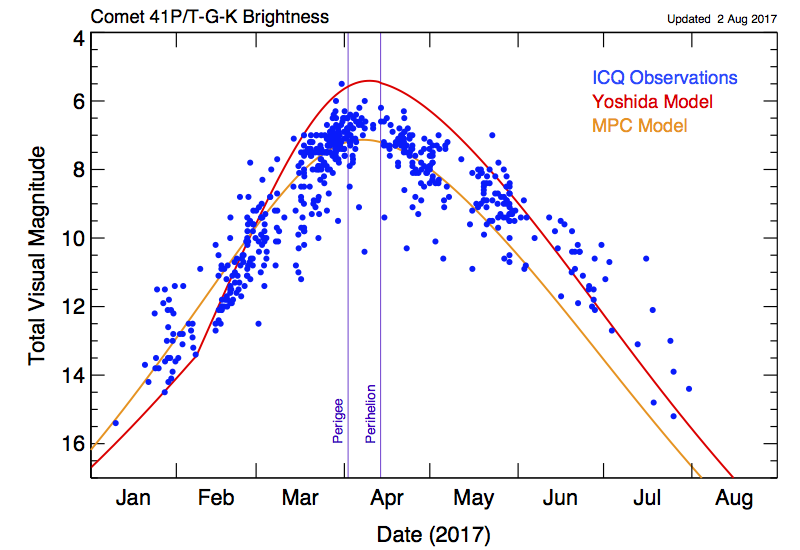What's going on with comet Tuttle-Giacobini-Kresak?
Secular Lightcurve
Plot showing the Total Visual Magnitude of comet 41P/T-G-K as a function of time. Observations were compiled at the COBS Comet Observation Database.
23 April 2017 Update - NASA Video
NASA has just released a video highlighting the three 4*P comets. Check it out here.
30 March 2017 Update - Rotation State
Two reports have been made regarding the rotation of T-G-K's nucleus, both measured from periodic variations in the morphology of CN in the coma. In early March, Farnham et al. reported a 19.9 hr period (CBET 4375), while in late March, Knight et al. reported measurements changing from 24 to 27 hr (CBET 4377). This suggests: 1) the nucleus is rapidly spinning down as a result of cometary activity; 2) it is in a state of non-principal axis (complex) rotation, with the changes in morphology mimicking a changing rotation rate; or 3) geometric effects are producing a synodic period that is changing with time.
28 March 2017 Update - Brightness
Comet T-G-K is approaching its 1 April perigee. It is rapidly brightening, though currently, it is slightly fainter than the Yoshida visual magnitude predictions. This trend suggests that it is not likely to reach naked eye brightness unless it experiences an outburst around perihelion.
We acknowledge with thanks the comet observations from the COBS Comet Observation Database contributed by observers worldwide and used in this work.